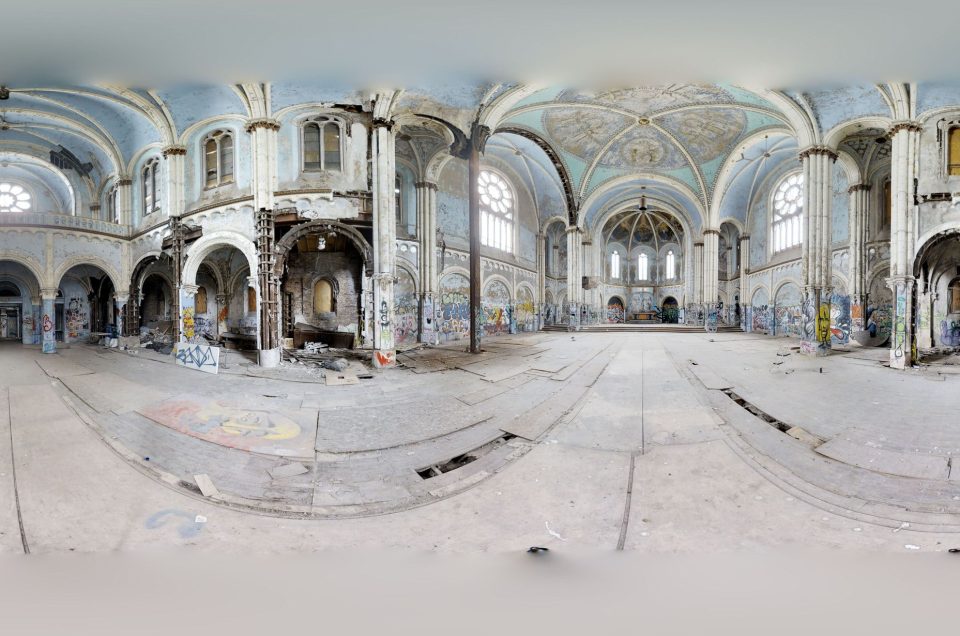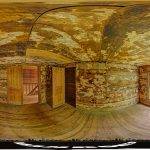Exploring the Haunting History of Essex County Jail
Explore the abandoned Essex County Jail in a unique and immersive way. Using the incredible technology of 360-degree panoramic imaging, Google Maps Street View offers an opportunity to delve into this deserted space without leaving the comfort of your home. The detailed view provided allows you to navigate through the eerie corridors and empty cells, giving a comprehensive perspective of what the jail once was. This remarkable virtual tour captures the essence of abandonment and history, letting you experience the desolate yet fascinating interior of the Essex County Jail in a way that feels almost real.
Image by: Ethan
Nestled in the University Heights section of Newark, New Jersey, the old Essex County Jail stands as a silent witness to the tumultuous history of American incarceration. Constructed in 1837, designed by the renowned architect John Haviland, this building was not just a jail but a statement of penal reform and architectural prowess.
The Birth of Essex County Jail
The story of Essex County Jail begins with its construction in 1837 to replace a previous jail that was destroyed by fire. Haviland, already famous for designing the Eastern State Penitentiary and other penal facilities, envisioned a structure that combined functionality with emerging penal philosophies. The original construction included garden paths, courtyards, and even a greenhouse for well-behaved inmates, reflecting a more progressive approach to incarceration during that period.
Architectural and Historical Significance
The Essex County Jail was ahead of its time in terms of amenities. It boasted running water, sanitation, electricity, and heat – facilities that were rare even for the non-incarcerated citizens of Newark at the time. Its design was a blend of punishment and reform, with elements like glass catwalks and modular steel cells in the East Wing, and a radiant-heat pipe system lining the walls of the West Wing.
Expansion and Evolution of the Essex County Jail
Over the years, the jail expanded, mirroring the growth of Newark from a small town to a bustling metropolis. By the 1890s, the facility had grown to include over 300 cells, a hospital, laundry facilities, and a powerhouse. This expansion was not just physical; it also reflected a shift in the justice system, from short-term sentences for petty crimes to addressing a wider range of offenses.
Decay and Abandonment
Despite its historical and architectural significance, the Essex County Jail faced decline. By the 1960s, it was overcrowded and in poor condition. Following the construction of a new jail in 1970, the old Essex County Jail was repurposed for the Essex County Narcotics Bureau before being completely abandoned in 1989. The building, now severely damaged by fires and neglect, stands as a decaying monument to its past.
The Present State and Future Possibilities
Today, the old Essex County Jail is a shadow of its former self, rapidly decaying and partially collapsed. Efforts to preserve the jail have been met with challenges, including a fire in 2001 and legal hurdles related to its historical status. However, there’s a glimmer of hope: in 2018, a team of graduate students at Columbia University proposed various reuse ideas for the jail, ranging from institutional reuse to housing and community hubs.
Notable Inmates and Events at the Essex County Jail
Throughout its operational years, Essex County Jail hosted various notable figures, including participants in the 1913 Silk Strike and John W. Griggs, a former Governor of New Jersey and U.S. Attorney General. These figures underscore the jail’s role in the broader narrative of New Jersey’s social and political history.
Conclusion
The Essex County Jail, with its storied past and architectural marvels, is more than just an abandoned structure. It’s a testament to the evolution of penal reform, the growth of a city, and the ever-changing landscape of justice. As urban explorers and history enthusiasts explore its ruins, they walk through the pages of a history book written in stone and steel.
If you liked reading about the abandoned Essex County Jail, you might enjoy reading about the abandoned Brushy Mountain State Penitentiary in Tennessee, the Presidio Modelo in Cuba or the West Virginia Penitentiary in West Virginia.

A 360-degree panoramic image captured inside the abandoned Essex County Jail in Newark, New Jersey. Image by: Ethan
Do you have 360-degree panoramic images captured in an abandoned location? Send your images to Abandonedin360@gmail.com. If you choose to go out and do some urban exploring in your town, here are some safety tips before you head out on your Urbex adventure.
Unlock the secrets of exploration by diving into precise GPS data available exclusively for an array of hidden gems and hundreds of other captivating sites, all within our members’ section. By investing in a Gold Membership, you’re not just gaining access; you’re securing a key to a vast, global archive of abandoned, untouched, and mysterious locations waiting to be discovered. Embark on your adventure with confidence, knowing every corner of the world can be within your reach. Don’t just observe—explore, discover, and claim the extraordinary journey that lies ahead with our treasure trove of world secrets. Subscribe now and transform the way you see the world!
If you want to start shooting 360-degree panoramic images, you might want to look onto one-click 360-degree action cameras.
Click on a state below and explore the top abandoned places for urban exploring in that state.






